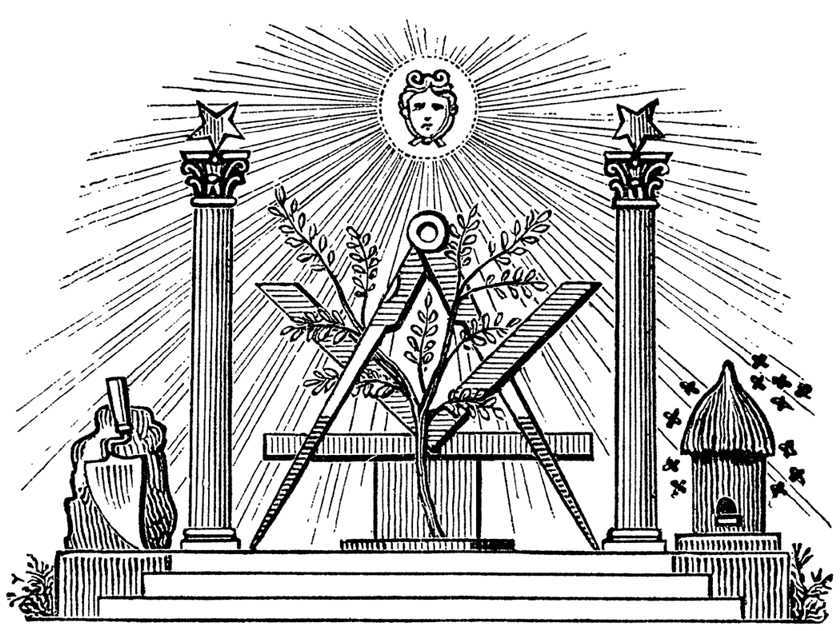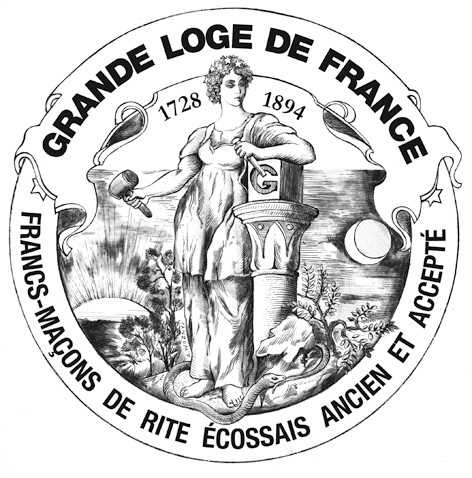
We begin this narrative of the centuries-old work of French Freemasonry (and especially the Grand Lodge of France) with reference to the Shaw Statute of 1598 which is mentioned as one of the first significant documents in the fifth edition of the 2016 Grand Lodge of France brochure. This document was prepared by William Shaw on December 28 of that year for the approval of the Freemasons gathered on that day in order to gain the significance of the agreed, voted and recognized convention. The document provides an explanation of the tasks of Freemasons as well as an interpretation of how to carry out tasks within the lodge in a way that would be acceptable and consistent with the experience and knowledge of the gathered brothers. Shaw specified that a master mason can have a maximum of 3 students during his life who would be attached to him for a period of 7 years. The document also contains numerous other rules, including the fact that 6 Masons masters and two students can be present at new initiations, but there was also talk of work supervision and penalties for those who do not attend work. This was a significant addition to the understanding and formation of the broader concept of operative and speculative Freemasonry in later periods until today.
Going further through history, the Andersen Convention of 1721 was formed, which was written by James Andersen on the initiative of John Montagu, the Grand Master of the London Lodge at that time. Mention is also made of Andersen’s collaboration with Jean Theophilus Desagulliers, who was known as a Huguenot but also as a scientist and philosopher who gave strong support to the ideas of Isaac Newton.
Half a century after the Andersen Convention, the Statute of 1762, often referred to as the Bordeaux Constitution, was drafted in France. The original copy has disappeared, and copies remain that serve as evidence of the development of French Freemasonry in the 17th century. Over time, certain problems have been recorded, which are reflected in different versions of copies created in later periods. However, without going into too much detail, this document confirms the existence of an order with 25 degrees of development in total (Rite de Perfection de Bordeaux). Somewhat later, in 1786, the Great Constitution was formed in Berlin, where an order with 33 degrees was formed, and in 1875, the Convention of the International Supreme Council constituted the founding charter in Lausanne.

As early as 1728, Philip Wharton, as the Grand Master of the French Masons, defined the path for the development of the Grand Lodge of France. In 1761, Etienne Morin received a patent for recognition from Chalon de Jonville and the Earl of Clermont, the then Grand Master.
Alexander Francois August De Grass, better known as the Earl of Grass-Tilly, as a French officer after the defeat of the French fleet at Sant Domigo in 1793, moved to Charleston, South Carolina, where he organized with other French officers and joined the Freemasons, founding a French chapter. In 1801 he was one of the 11 members of the Supreme Council of the Ancient and Accepted Order of Scotland. After Napoleon came to power, De Grass returned to France and helped develop Freemasonry (the Scottish Order of the Ancient and Accepted) both in Paris and in other European capitals. The ancient and accepted Scottish Rite was formed and came to France in 1804.
For example, in 1805, De Grass influenced the formation of the Supreme Council of Italy of the Scottish Order of the Ancient and Accepted in Milan, and then in 1809 he influenced the formation of the Supreme Council in Spain in Madrid.
In 1838, Eli, Duke of Decazes, was appointed Sovereign Grand Commander of the Supreme Council of France, where he would remain until 1860. In 1862, Napoleon III personally appointed French Marshal Bernard Pierre Magnan as the successor to Prince Lucien Murat as Grand Master of the Grand Orient of France. Bernard Pierre Magnan intended to impose the reunification of all the rites that were then applied in France within the framework of the Grand Orient. He did not succeed due to the actions of Jean Pons Guillaume Vianet, a French academic, politician and writer, elected Sovereign Grand Commander of the Supreme Council of France from 1860 to 1868.
Under the present name of the Grand Lodge of France, the order has existed since 1894 (G∴L∴D∴F∴).
The first Constitution of the revived Grand Lodge of France was based on the Declaration of Principles of Lausanne in 1875 and defined Freemasonry as a “universal alliance based on solidarity” with the aim of promoting the emancipatory evolution of society.
At the beginning of the 20th century, the Grand Lodge of France grew from 3,000 members in 1894 to 8,400 in 1912, while in 1914 it had 149 lodges. In 1911, the Grand Lodge of France bought the former Franciscan monastery at 8 rue Puteaux in the 17th arrondissement to establish its current headquarters. During the First World War, in January 1917, the International Conference of France, Belgium, Italy and Serbia was held. The creation of the League of Nations was positively voted on that occasion.
Later, at the beginning of the Second World War, in June 1940, the Gestapo occupied the archives of the Grand Lodge of France, and the German authorities occupied the temple. However, Scottish Freemasonry tried to survive in the secrecy imposed by the war times, but also thanks to the principles issued by the then Grand Master Dumensil De Garmont.
In the 1960s and 1970s, the Grand Master, Dr. Pierre Simon (doctor), played a key role in drafting the contraceptive law, which was introduced to Parliament by Simone Weil in 1975. During the second half of the 20th century, the Grand Lodge of France grew steadily from 438 lodges and 17,500 members in 1989 to 640 lodges and 25,000 members in 1998. As of 2020, it has 930 lodges and over 33,000 members.
Today, the Grand Lodge of France has 242 lodges of 4 to 14 degrees (Loges de Perfection), 100 lodges of 15-18 degrees (Souverrains Chapitres), 56 lodges of 19-30 degrees (Sublimes Areopages), 12 lodges of 31 degrees (Tribunaux Reginaux) and 5 lodges of 32 degrees (Consistories Regionaux). In total, close to 10,000 members work in these workshops at higher levels.
In the preparation of this text, the official brochures of the Grand Lodge of France were used as sources.